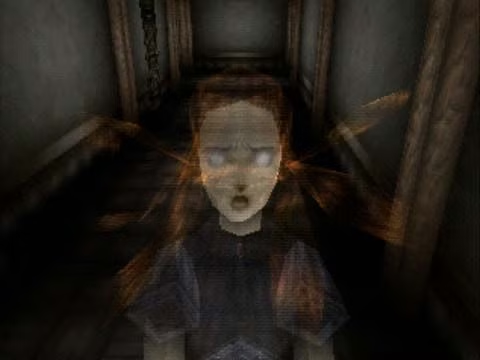
Richard Osmond searches for his missing girlfriend, Christina, who disappeared three months earlier from a university library’s reserve room. His investigation leads him to a Gothic manor estate where ghostly residents await release from their tragic pasts. As he uncovers connections between Christina and the estate’s inhabitants, Richard discovers a cursed ritual involving twin sisters, a Soul Stone, and dark family secrets.






Developed and published by FromSoftware exclusively in Japan, Echo Night 2 hits the PS1 in August 1999. The narrative diverges from the original Echo Night as its own standalone timeline. As Richard traverses the haunted manor, he resolves spirits’ unfinished business through puzzle-solving and usage of light, retrieving “Astral Pieces” that unlock branching endings
Gameplay
- Perspective & Interaction: First-person adventure no firearms at play.
- Core Mechanic: Confronting ghosts requires flipping light switches to banish or pacify them.
- Time Travel: Certain interactions transport Richard into the past to uncover clues or fulfill ghostly tasks.
- Endings: Collecting Astral Pieces influences which of several endings unfolds.
Visuals & Style


Maintaining the series’ moody tone, the game employs pre-rendered, gothic-inspired environments filled with atmospheric lighting. Its visual design leans into horror through shadowy interiors, desolate corridors, and uncanny ghost appearances enhancing the creeping terror despite PlayStation-era limitations.
Importance in Survival Horror History
Although relatively obscure, Echo Night 2 furthers the series’ dedication to quiet, psychological horror. Favoring atmosphere, narrative depth, and ethical dilemmas over combat, it exemplifies the “quiet horror” approach. Fans have noted its thematic influence including astral elements and dreamlike storytelling on later FromSoftware projects like Déraciné.
Reception vs Historical Value
- Reception at Release: The game earned a solid 32 out of 40 score from Famitsu, a well-known Japanese gaming publication.
- Historical Value: Gaining appreciation among niche horror and FromSoftware fans, the game remains a cult favorite and a noteworthy early example of From’s narrative-driven horror style.
Availability & Collectibility



- Availability Today:
- Originally released only in Japan in 1999.
- Reissued digitally on the Japanese PlayStation Network (PSN) in 2007.
- No official international release or Re-releases.
- Collectible Value:
Physical PS1 copies are rare outside Japan, with full boxed sets occasionally surfacing on marketplaces like eBay .
